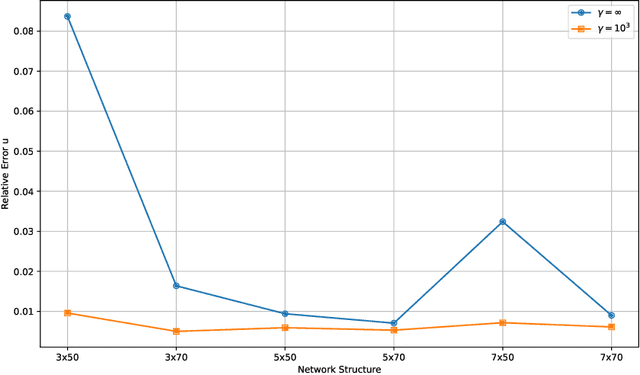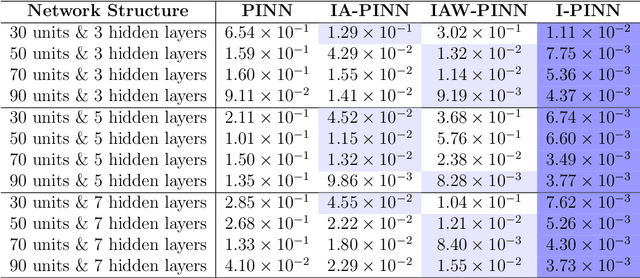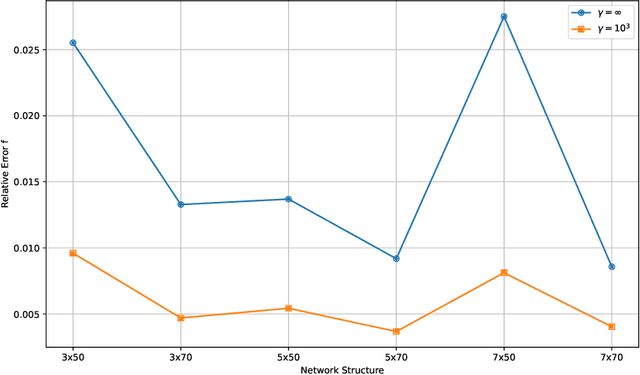Yuqian Zhou
ZipIR: Latent Pyramid Diffusion Transformer for High-Resolution Image Restoration
Apr 11, 2025Abstract:Recent progress in generative models has significantly improved image restoration capabilities, particularly through powerful diffusion models that offer remarkable recovery of semantic details and local fidelity. However, deploying these models at ultra-high resolutions faces a critical trade-off between quality and efficiency due to the computational demands of long-range attention mechanisms. To address this, we introduce ZipIR, a novel framework that enhances efficiency, scalability, and long-range modeling for high-res image restoration. ZipIR employs a highly compressed latent representation that compresses image 32x, effectively reducing the number of spatial tokens, and enabling the use of high-capacity models like the Diffusion Transformer (DiT). Toward this goal, we propose a Latent Pyramid VAE (LP-VAE) design that structures the latent space into sub-bands to ease diffusion training. Trained on full images up to 2K resolution, ZipIR surpasses existing diffusion-based methods, offering unmatched speed and quality in restoring high-resolution images from severely degraded inputs.
TurboFill: Adapting Few-step Text-to-image Model for Fast Image Inpainting
Apr 01, 2025Abstract:This paper introduces TurboFill, a fast image inpainting model that enhances a few-step text-to-image diffusion model with an inpainting adapter for high-quality and efficient inpainting. While standard diffusion models generate high-quality results, they incur high computational costs. We overcome this by training an inpainting adapter on a few-step distilled text-to-image model, DMD2, using a novel 3-step adversarial training scheme to ensure realistic, structurally consistent, and visually harmonious inpainted regions. To evaluate TurboFill, we propose two benchmarks: DilationBench, which tests performance across mask sizes, and HumanBench, based on human feedback for complex prompts. Experiments show that TurboFill outperforms both multi-step BrushNet and few-step inpainting methods, setting a new benchmark for high-performance inpainting tasks. Our project page: https://liangbinxie.github.io/projects/TurboFill/
Layer- and Timestep-Adaptive Differentiable Token Compression Ratios for Efficient Diffusion Transformers
Dec 22, 2024Abstract:Diffusion Transformers (DiTs) have achieved state-of-the-art (SOTA) image generation quality but suffer from high latency and memory inefficiency, making them difficult to deploy on resource-constrained devices. One key efficiency bottleneck is that existing DiTs apply equal computation across all regions of an image. However, not all image tokens are equally important, and certain localized areas require more computation, such as objects. To address this, we propose DiffRatio-MoD, a dynamic DiT inference framework with differentiable compression ratios, which automatically learns to dynamically route computation across layers and timesteps for each image token, resulting in Mixture-of-Depths (MoD) efficient DiT models. Specifically, DiffRatio-MoD integrates three features: (1) A token-level routing scheme where each DiT layer includes a router that is jointly fine-tuned with model weights to predict token importance scores. In this way, unimportant tokens bypass the entire layer's computation; (2) A layer-wise differentiable ratio mechanism where different DiT layers automatically learn varying compression ratios from a zero initialization, resulting in large compression ratios in redundant layers while others remain less compressed or even uncompressed; (3) A timestep-wise differentiable ratio mechanism where each denoising timestep learns its own compression ratio. The resulting pattern shows higher ratios for noisier timesteps and lower ratios as the image becomes clearer. Extensive experiments on both text-to-image and inpainting tasks show that DiffRatio-MoD effectively captures dynamism across token, layer, and timestep axes, achieving superior trade-offs between generation quality and efficiency compared to prior works.
UniReal: Universal Image Generation and Editing via Learning Real-world Dynamics
Dec 10, 2024



Abstract:We introduce UniReal, a unified framework designed to address various image generation and editing tasks. Existing solutions often vary by tasks, yet share fundamental principles: preserving consistency between inputs and outputs while capturing visual variations. Inspired by recent video generation models that effectively balance consistency and variation across frames, we propose a unifying approach that treats image-level tasks as discontinuous video generation. Specifically, we treat varying numbers of input and output images as frames, enabling seamless support for tasks such as image generation, editing, customization, composition, etc. Although designed for image-level tasks, we leverage videos as a scalable source for universal supervision. UniReal learns world dynamics from large-scale videos, demonstrating advanced capability in handling shadows, reflections, pose variation, and object interaction, while also exhibiting emergent capability for novel applications.
Baking Gaussian Splatting into Diffusion Denoiser for Fast and Scalable Single-stage Image-to-3D Generation
Nov 21, 2024



Abstract:Existing feed-forward image-to-3D methods mainly rely on 2D multi-view diffusion models that cannot guarantee 3D consistency. These methods easily collapse when changing the prompt view direction and mainly handle object-centric prompt images. In this paper, we propose a novel single-stage 3D diffusion model, DiffusionGS, for object and scene generation from a single view. DiffusionGS directly outputs 3D Gaussian point clouds at each timestep to enforce view consistency and allow the model to generate robustly given prompt views of any directions, beyond object-centric inputs. Plus, to improve the capability and generalization ability of DiffusionGS, we scale up 3D training data by developing a scene-object mixed training strategy. Experiments show that our method enjoys better generation quality (2.20 dB higher in PSNR and 23.25 lower in FID) and over 5x faster speed (~6s on an A100 GPU) than SOTA methods. The user study and text-to-3D applications also reveals the practical values of our method. Our Project page at https://caiyuanhao1998.github.io/project/DiffusionGS/ shows the video and interactive generation results.
Improved physics-informed neural network in mitigating gradient related failures
Jul 28, 2024



Abstract:Physics-informed neural networks (PINNs) integrate fundamental physical principles with advanced data-driven techniques, driving significant advancements in scientific computing. However, PINNs face persistent challenges with stiffness in gradient flow, which limits their predictive capabilities. This paper presents an improved PINN (I-PINN) to mitigate gradient-related failures. The core of I-PINN is to combine the respective strengths of neural networks with an improved architecture and adaptive weights containingupper bounds. The capability to enhance accuracy by at least one order of magnitude and accelerate convergence, without introducing extra computational complexity relative to the baseline model, is achieved by I-PINN. Numerical experiments with a variety of benchmarks illustrate the improved accuracy and generalization of I-PINN. The supporting data and code are accessible at https://github.com/PanChengN/I-PINN.git, enabling broader research engagement.
Perceptual Artifacts Localization for Image Synthesis Tasks
Oct 09, 2023



Abstract:Recent advancements in deep generative models have facilitated the creation of photo-realistic images across various tasks. However, these generated images often exhibit perceptual artifacts in specific regions, necessitating manual correction. In this study, we present a comprehensive empirical examination of Perceptual Artifacts Localization (PAL) spanning diverse image synthesis endeavors. We introduce a novel dataset comprising 10,168 generated images, each annotated with per-pixel perceptual artifact labels across ten synthesis tasks. A segmentation model, trained on our proposed dataset, effectively localizes artifacts across a range of tasks. Additionally, we illustrate its proficiency in adapting to previously unseen models using minimal training samples. We further propose an innovative zoom-in inpainting pipeline that seamlessly rectifies perceptual artifacts in the generated images. Through our experimental analyses, we elucidate several practical downstream applications, such as automated artifact rectification, non-referential image quality evaluation, and abnormal region detection in images. The dataset and code are released.
SimpSON: Simplifying Photo Cleanup with Single-Click Distracting Object Segmentation Network
May 28, 2023Abstract:In photo editing, it is common practice to remove visual distractions to improve the overall image quality and highlight the primary subject. However, manually selecting and removing these small and dense distracting regions can be a laborious and time-consuming task. In this paper, we propose an interactive distractor selection method that is optimized to achieve the task with just a single click. Our method surpasses the precision and recall achieved by the traditional method of running panoptic segmentation and then selecting the segments containing the clicks. We also showcase how a transformer-based module can be used to identify more distracting regions similar to the user's click position. Our experiments demonstrate that the model can effectively and accurately segment unknown distracting objects interactively and in groups. By significantly simplifying the photo cleaning and retouching process, our proposed model provides inspiration for exploring rare object segmentation and group selection with a single click.
Automatic High Resolution Wire Segmentation and Removal
Apr 01, 2023



Abstract:Wires and powerlines are common visual distractions that often undermine the aesthetics of photographs. The manual process of precisely segmenting and removing them is extremely tedious and may take up hours, especially on high-resolution photos where wires may span the entire space. In this paper, we present an automatic wire clean-up system that eases the process of wire segmentation and removal/inpainting to within a few seconds. We observe several unique challenges: wires are thin, lengthy, and sparse. These are rare properties of subjects that common segmentation tasks cannot handle, especially in high-resolution images. We thus propose a two-stage method that leverages both global and local contexts to accurately segment wires in high-resolution images efficiently, and a tile-based inpainting strategy to remove the wires given our predicted segmentation masks. We also introduce the first wire segmentation benchmark dataset, WireSegHR. Finally, we demonstrate quantitatively and qualitatively that our wire clean-up system enables fully automated wire removal with great generalization to various wire appearances.
Image as Set of Points
Mar 02, 2023Abstract:What is an image and how to extract latent features? Convolutional Networks (ConvNets) consider an image as organized pixels in a rectangular shape and extract features via convolutional operation in local region; Vision Transformers (ViTs) treat an image as a sequence of patches and extract features via attention mechanism in a global range. In this work, we introduce a straightforward and promising paradigm for visual representation, which is called Context Clusters. Context clusters (CoCs) view an image as a set of unorganized points and extract features via simplified clustering algorithm. In detail, each point includes the raw feature (e.g., color) and positional information (e.g., coordinates), and a simplified clustering algorithm is employed to group and extract deep features hierarchically. Our CoCs are convolution- and attention-free, and only rely on clustering algorithm for spatial interaction. Owing to the simple design, we show CoCs endow gratifying interpretability via the visualization of clustering process. Our CoCs aim at providing a new perspective on image and visual representation, which may enjoy broad applications in different domains and exhibit profound insights. Even though we are not targeting SOTA performance, COCs still achieve comparable or even better results than ConvNets or ViTs on several benchmarks. Codes are available at: https://github.com/ma-xu/Context-Cluster.
 Add to Chrome
Add to Chrome Add to Firefox
Add to Firefox Add to Edge
Add to Edge